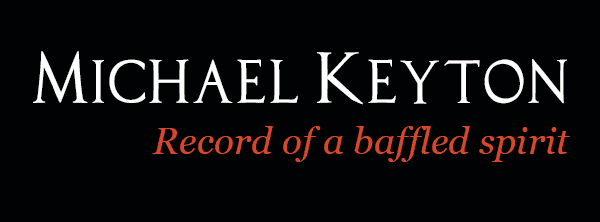Warm wax is wax until impressed by a seal and is at once transformed. The mind of a child is of a similar nature, impressions buried deep and long lasting. In the words of St Ignatius Loyola. ‘Give me a child until he is seven, and I will show you the man.’ This is true of cities too, Liverpool in particular taking on the role of Loyola. The weather for a start, raw winds and ocean-drenched rain, glowing cigarettes, cocky watchmen and braziers in freezing darkness, but above all the buildings.
As a child, I’d taken my surroundings largely for granted, only becoming aware of their impact as I grew older. The buildings that shaped me reflect confidence and grandeur, imagination, romance, light and dark. Blackened or abrased clean, they tower over the pedestrian, creating chasms of shadow and unexpected shafts of light. The great pubs of Liverpool, many now sadly demolished, could have graced the mind of King Ludwig II of Bavaria, and all this I wandered through, holding the hand of our mum, absorbing the clatter and smell of the streets.
What Liverpool lacked in litter was made up for by its odour: stale fruit and bodies, tobacco, and beer. Beer had a stronger smell than now, caught as you passed the open door of any pub. Along with the sharp, sweet fumes of cigarette and pipe was a heavy, sour smell—that of barrelled beer.
Great buildings sculpt the mind, feed yet unknown thoughts in a way ring roads and urban sprawl can’t. The maligned slum terraces shared a similar visual poetry, the magic—dark though it was—replaced by central heating and soulless blocks in the sky.
Liverpool was heavily bombed during the Second World War, and as late as the early sixties, you walked past old craters and open spaces where houses had been.
As a child I’d walked a city that seemed complete and unchanging, one that would always be there, bombsites and all. I breathed in the dark and grandiose, the gothic, fanciful and sometimes scary. I never factored in soot or that stone could be differently coloured. I never knew that bombsites might vanish, or great buildings knocked down leaving gaps like a prize-fighter’s grin. I never knew that town planners might dream of Dan Dare, a comic future in concrete and glass.
In the 1960's planners visualised metropolis and buildings the Luftwaffe missed were knocked down to be replaced by the tawdry. Mercifully they ran out of money, or it might have been worse.
These are the memories I took with me to Swansea University, becoming in time that mocked creature, 'the plastic scouser.’ It was though, a slow process, being unable to let go of the city that had shaped me for better or worse. Wherever I go is matched against it; my heart quickens when I return and feel its pavements under my feet. Old landmarks drift into view, but now there are gaps and anomalies.
Cities grow and change, but some of the whimsy and grandeur has gone. Space is abused, new buildings squeezed in like unexpected guests; old landmarks have been obscured, streets built over. The Victorian and Edwardian vision has gone. Liverpool, though vibrant as ever, now has a techno-late-medieval vibe, higgledy-piggledy in places, buildings mushrooming from nowhere. These things hit me in flashes as decades fly by. And now I’m feeling less of a ‘plastic scouser’ more a ghost from the past.
Marketing. Last excerpt from


























_-_Google_Art_Project_-_edited.jpeg)